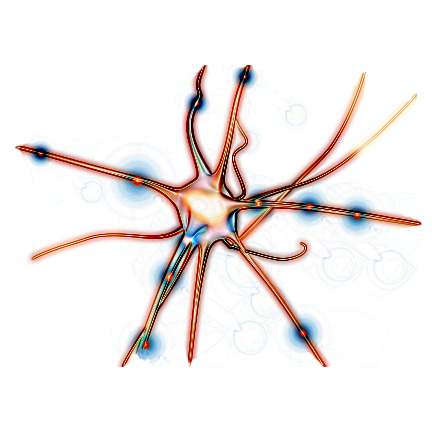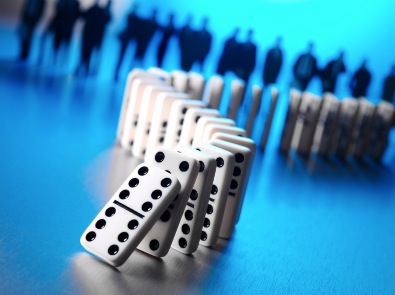Why should leaders care about feelings?
In 1995 Daniel Goleman sent a wave of hope around the world by presenting the groundbreaking science of Emotional Intelligence in a compelling work by that title. His 2006 book, Social Intelligence: The New Science of Human Relationships, took the case to a new level showing how emotion is a critical component of leadership and learning.
What’s the leadership imperative for optimizing human performance and the research that makes attention to feelings a bottom-line priority?
In Emotional Intelligence: Why It Can Matter More Than IQ, Goleman reported on a variety of research and practice making the case that skill in handling emotion is as significant as skill in handling other forms of data (such as those measured on an IQ test).
Examining both scientific theory (including the work of Salovey, Mayer, BarOn, and Damasio) and learning programs (including Six Seconds’ Self-Science process) Goleman identified that all these models of emotional intelligence address both the inner world and the way what’s inside affects the outside. This led him to consider the social dimension of emotional intelligence.
I asked Goleman to explain how Social Intelligence connects with this previous work:
“Social intelligence is the interpersonal part of emotional intelligence. In my model of EI, there are four domains: self-awareness, emotional self-management, empathy and social awareness, and social skills – or managing relationships. And the second two of the those, the empathy and social skill components, are what make up social intelligence.”
At the time of the first Emotional Intelligence book the field was very young. Goleman reported on the emerging evidence that emotions might actually help thinking. Neuroscience imaging was just getting advanced enough to show hints of how the brain actually processes information, and scholars and practitioners were beginning to measure and teach about this linkage.
Over a decade later, the science advanced dramatically and Goleman’s 2006 book documents some of the critical developments. “I couldn’t have written this book when I wrote emotional intelligence because the science is so new; it didn’t exist in 1995. The field of social neuroscience has only published its first journal in the last few months. And social neuroscience expands the domain of studies from one brain and one body and one person to two or more brains and body and people. In other words, it’s a neuroscience of what happens during interaction. This turns out to be extraordinarily important as an insight and helps us understand the parallel circuitry that handles our relationships.”
Even remote: Emotion is communicated between individuals and across groups – affecting decision-making, commitment, and performance. Individuals with power and influence have an even larger effect.
The Neuroscience of Human Connection
The “parallel circuitry” is a phenomenal discovery that, like some many discoveries, happened by accident. Neuroscientist Giacomo Rizzolatti, MD, and his colleagues at the University of Parma were mapping the brains of monkeys to see how specific areas of the brain function[1].“They were monitoring a cell,” Goleman says, “that only fired when the monkey lifted its arm. One day, the cell fired even though the monkey hadn’t lifted its arm – they realized he was watching a lab assistance eat an ice cream cone. Whenever the human lifted his arm, the monkey’s cell fired.” In other words the neuron was activated as if the money were taking action. “It turns out to be exactly what happens in human brains too. As you see something, it activates that pattern in you.”
We asked Marco Iacoboni, one of the pioneers in Mirror Neuron research, about this origin story. He said that there was indeed a monkey… and graduate students found a reading their professor did not believe. Everyone “knew” how motor neurons work… and finding the mirror neurons was a huge surprise. This structure, Iacoboni says, might just be the neural basis of empathy.
The work with mirror neurons continues to proceed around the world. Christian Keysers and Bruno Wicker showed that one person’s emotions activate another person’s mirror neurons [2]. At the University of San Diego Dr. V.S. Ramachandran is studied the link between mirror neurons and autism. Iacoboni found mirror neurons connect our social, behavioral, motor and cognitive areas. In short, our brains are constantly reacting to the environment and literally changing based on the people around us.
Goleman continues, “This puts us on the same wavelength and it does it automatically, instantaneously and unconsciously.” Now, in 2020, as we’re learning more about the way people are interconnected, there’s a surprising and important addition:
Emotions and The Bottom Line
While “being on the same wavelength” is fabulous when a team is working well, we’ve all seen how one grouch can sabotage the flow – especially when it’s the boss. Emotions are infectious, one person’s mood literally changes the others’ brains. “Because the social brain connects us so intimately, it provides the mechanisms that make emotions contagious and emotions are most contagious from the most powerful person in the room outward. This means that, for example, if a boss is angry or belittling or hypercritical, that the boss is going to create a state in the person who’s a target of that that it actually disables them from being able to work at their best. So that boss is, in effect, creating his or her own problems.”
For two decades, EQ trainers and coaches have learned the best EQ methods & tools to work with leaders to be more aware of the shadow they cast or the light they shed on an emotional level. Goleman says now the neuroscience makes the case so strongly that even the most “leave those feelings at the door” kind of boss has to consider the emotional fallout of his reactions:
Yet for bottom-line, quantitatively oriented leaders, isn’t this squishy emotional talk just a distraction from accomplishing the work at hand? Not so says Goleman – because even the most spreadsheet-driven executive needs to be concerned about optimal function. “The brain is designed to have the reciprocal relationship between states of negative emotional arousal and of optimal cognitive efficiency. Optimal cognitive efficiency means that the brain is working at its best for the task at hand.”
“If you want maximal productivity and if you want work that gets the best results,” he continues, “you want the people doing that work to be in the optimal brain state for the work. You are a person who can evict them from the zone of optimal performance by slothfully handling your own interactions with them. So it’s up to you to take responsibility for your impact on their ability to work at their best.”
The bottom line is “leaders have to take more responsibility for the impact they have on the people that they lead and the people around them. And every coworker does as well.”
Emotions Drive Teamwork
Social Intelligence provides numerous examples making the case for this heightened emotional awareness. One comes from a study at the Management School at Yale University. “Actors were recruited to become parts of groups that were working together on a project. When the actor playing the leader is very upbeat and positive and warm, then people feel upbeat – and they function better, by objective standards, as a team. If, however, the leader is critical, angry, and negative, everyone else becomes unhappy and distressed and they function more poorly as a team.”

“Mirror neurons” form a kind of biological map of the observed world, literally imprinting others’ behaviors in our brains.

The new neuroscience creates a compelling case for leaders: Your behavior and attitude has a powerful effect on performance.
Emotions are messages within and between us.
To lead people to work, learn, engage effectively: understanding and USING emotions is key.
Emotions Are Contagious
For example, in a now-classic study Alice Isen studied radiologists, finding positive mood enhanced their accuracy[3], or Sigal Barsade’s work on how leaders’ positive moods increase profitability. On the other hand, in some situations a “bad mood” is more effective. For example, Kimberly Elsbach and Pamela Barr found that people in negative moods use a more structured approach to decision-making, but even they don’t advocate for “bad mood organizations.” Rather, mood, or feelings, are one part of the evaluative process – as Elsbach and Barr conclude: “In making complex decisions, mood matters”[4].
The Social Intelligence that lets someone be aware of and manage these dynamics, Goleman asserts, are the lifeblood of an excellent leader. “The mistake that gets made by HR is they see someone who is fabulous individually, whether it’s a surgeon or a computer programmer, and they promote them to head of the team or head of the division, assuming that what made them so good as solo stars is going to help them be leaders. But if they lack the emotional intelligence abilities, empathy and skill at interaction, they’re going to be duds. And this happens over and over and over in organizations.”
Leading Schools with Social Intelligence
The new science of Social Intelligence also has profound implications for education and parenting. Just as leaders can eject their team members from the mental state that fosters optimal performance, the same is true for the classroom. The conclusion: The teacher’s attitude and caring are at least as significant as the technique and content of the teaching. As neurobiologist Mary Helen Immordino-Yang says: Learning IS social. At a school-wide level, that means the emotional tone of the school will make or break it’s effectiveness. This breakthrough science has given rise to the value of social emotional learning as a foundation for schools to be more successful.
For children and adults, mirror neurons and contagious emotions mean role modeling matters more than ever. “Mirror neurons really support the importance of role modeling because we know that people can learn by seeing someone execute well. We now understand the mechanism: When you watch someone else perform, that elicits in the same arousal pattern in you. Kids do this all the time; this is how toddlers learn at such a voracious speed. They learn how to do virtually everything they do without being explicitly told. By watching others, people develop an internal map of the observed behavior.” These mirrored arousal patterns become a kind of template, a map, that makes imitation so easy.
The Skills for Optimal Performance
In the Six Seconds Model of Emotional Intelligence, this awareness is captured through set of skills called “Give Yourself.” Given that we have such a profound affect on one another – that we literally shape each other’s brains, it becomes critical to consider the ripples we’re sending out. Anecdotally it’s evident that some leaders inspire optimal performance because they are so purpose-driven and operate with such high levels of integrity. They seem to send out a kind of magnetic force that draws out the best in their people. Now this emerging neuroscience helps us see why these “human signals” are so powerful.
Notes:
[1] Experimental Brain Research (Vol. 91, No. 1, pages 176-180), 1992 – Here is an excellent article on the history of this science: http://www.apa.org/monitor/oct05/mirror.html — and a link to NOVA special: http://www.pbs.org/wgbh/nova/sciencenow/3204/01.html
[2] Neuron (Vol. 40, No. 3, pages 655-664), 2003
[3] For example, Alice Isen’s chapter on “Positive Affect and Decision-Making” in The Handbook of Emotion (1993).
[4] See K Elsbach and P Barr, Effects of Mood on Individuals’ Use of Structure Decision Protocols, Organization Science, 10-2, 1999.
The original version of this article, The Neural Power of Leadership, was first published Feb 27, 2007.
- Knowing Isn’t Coaching: Three Emotional Intelligence Tools for Professional Coaches - April 3, 2024
- Coaching Down the Escalator: 3 Emotional Intelligence Tips forCoaches to Reduce Volatility & De-escalate Conflict in a Polarized World - March 6, 2024
- Dr. Daniel Goleman Explains the History of Emotional Intelligence - February 29, 2024


Thanks Josh for a very effective and powerful reminder on critical issues relating to leadership, be it family, education, or business.